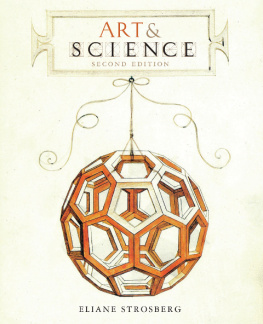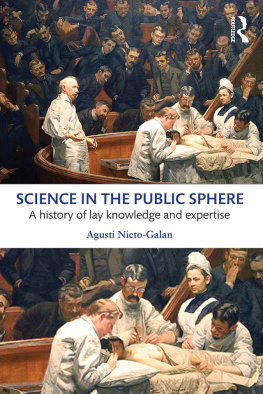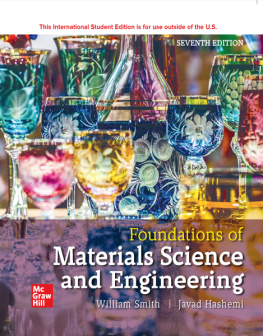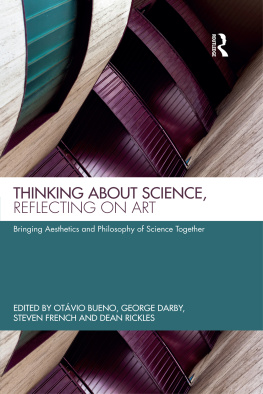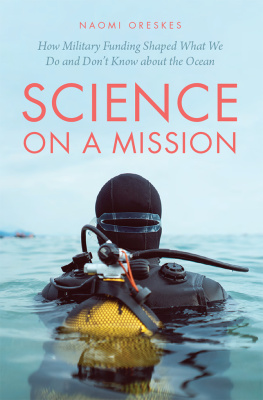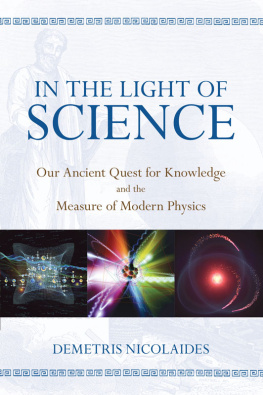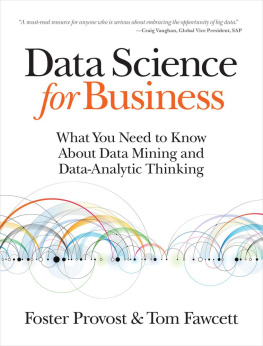About Art & Science , 2nd Edition
An accessible work, rich and well researched
Le Monde
Attractive, heavily illustrated, and up-to-date
Library Journal
Art and Science is the only book to survey the vital relationship between these two fields of endeavor in its full scope, from prehistory to the present day. Individual chapters explore how science has shaped architecture in every culture and civilization; how mathematical principles and materials science have underpinned the decorative arts; how the psychology of perception has spurred the development of painting; how graphic design and illustration have evolved in tandem with the methods of scientific research; and how breakthroughs in the physical sciences have transformed the performing arts. Some 270 illustrations, ranging from masterworks by Drer and Leonardo to the dazzling vistas revealed by fractal geometry, complement the wide-ranging text.
This new edition of Art and Science has been updated to cover the ongoing convergence of art and technology in the digital agea convergence that has led to the emergence of a new type of creator, the cultural provocateur whose hybrid artworks defy all traditional categorization. It will make thought-provoking reading for students and teachers, workers in creative and technical fields, and anyone who is curious about the history of human achievement.
About the Author
Eliane Strosberg holds an M.D. and a Ph.D. from the Free University of Brussels and was a Research Fellow at Harvard. The cofounder of the cultural organization Rencontres Art et Science, she has also served as a consultant to UNESCO. Her other works include The Human Figure and Jewish Culture (Abbeville).
Art & Science is also available in paperback.
To view our complete selection of e-books, visit www.abbeville.com/digital.

Melencolia I, Albrecht Drer, 1514
(See .)
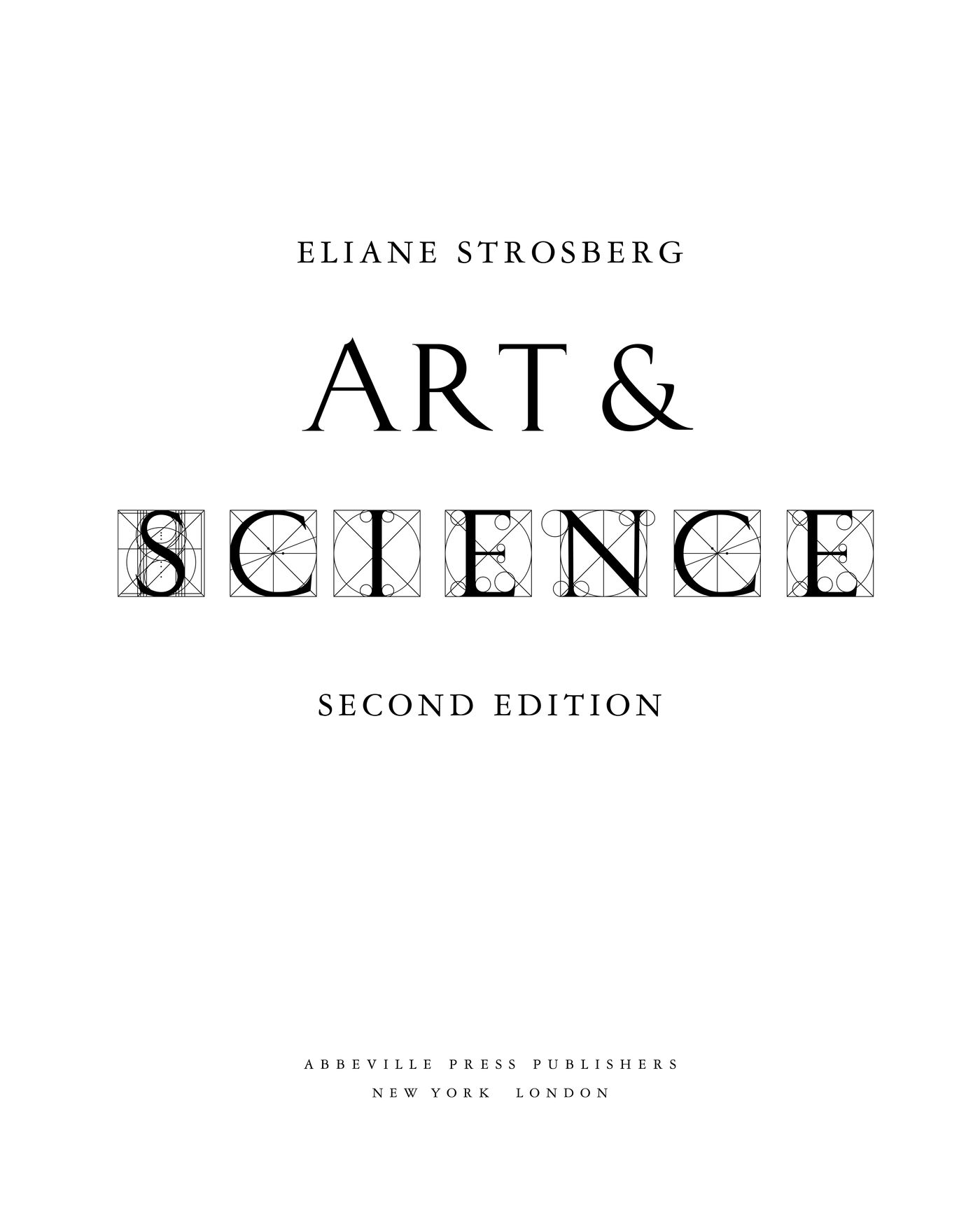
Contents
Foreword
What is common to art and science? Creation. Or rather the drive that impels creativity. The thrill of the word and sound, of the color, lines and shapes of art. The temerity of the scientific hypothesis which extends beyond reality. What is the aim of a creative act in art or science? To surpass reality. Art suggests the infinite variations of realitys manifestations, which are impossible to capture with the usual senses. That such expressions are part of a long and complex chain is all that we know.
One of my teachers at Oxford, a Nobel prizewinner, said: We should seek what others have not seen, think what others have not thought of. Is that not the essence of creation? Malraux lucidly stated this in a text on cultural heritage written in 1936: The convincing force of a work lies in the difference between it and the works that preceded it. He illustrated the subject by quoting Giotto, but could have made his point just as well by discussing Einsteins theory of relativity.
Occasionally, when science reaches beyond its frontiers, it merges with philosophy. Likewise, art can be dematerializedboiled down to pure ideas. Artists exercise the same self-discipline and rigor as scientists.
Creation, whether in art or science, is a long journey. Some believe that youth is a prerequisite of creativity. This is not necessarily the case. We obviously all admire Mozarts precocity, but equally admirable is the expression of a maturer mind, one whose critical faculties have been nurtured over time and through experience.
It is difficult to be thrilled by anything that is too neatly served up. I do not particularly appreciate pure evidence, creations to which nothing can be added. I much prefer to come upon works in the making, which draw audiences into the exhilarating struggle of creationin which anyone can be a co-creator, a participator in the act of creation. This is what I thought recently while listening to the great cellist Rostropovich who, at every performance, re-creates music with unparalleled enthusiasm: it is this invitation to share beauty that embodies the true act of genius.
Dare to know: such was the motto at Oxford. Perhaps the opposite is even more true: Know how to dare. To dare to invent, to innovate and create, to escape routine and provoke the unpredictable. As the days roll on, until the very end, we should fully reinvent each day itself and dare to paint it with fresh colors.
Federico Mayor, Director-General of UNESCO (19871999)
Preface
The first edition of this book was part of a UNESCO transdisciplinary cultural program. Its style is deliberately casual and narrative; it is not a history book, but rather a collection of stories aimed at stimulating interest in the subject through dialogue.
The project deals predominantly with the visual arts. The first part, on architecture, is a general overview. Decoration, painting and graphic communication constitute the other main sections. Music and the performing arts are only dealt with in the context of their relationship with the visual arts. Literature is not included in this work. Given the vastness of the subject, the main focus is on Western culture, although numerous examples from other civilizations have been included. This new edition has been updated to reflect the dramatic changes in the fine arts driven by new scientific discoveries and new technologies.
A number of eminent personalities have supported this effort: Ren Berger, writer and honorary president of the arts department at the University of Lausanne; Jean Dausset, Nobel laureate in medicine and modern art connoisseur; Frank Popper, specialist in philosophical questions relating to art and technology; Ilya Prigogine, Nobel laureate in chemistry and author of books on aesthetics.
The text also received input from specialists in their respective fields: Marianne Clouzot, artist; Philippe Comar, artist and professor at the cole Suprieure des Beaux-Arts; Franoise Gaillard, professor of philosophy at the University of Paris VII; Antoinette Hall, curator of the Muse de la Cramique at Svres; Bruno Jacomy, engineer, associate director of the Muse des Arts et Mtiers; Elaine Koss, deputy director of the Art College Association; Bernard Maitte, specialist in the history of science and knowledge; Sarah McFadden, art historian and an editor of Art in America .
This book would not have been possible without the generosity of those who lent their iconographic documents as a courtesyartists, photographers, museums, librarians, publishers and corporations.
The author would like to thank Tereza Wagner and Michiko Tanaka who literally carried this project within UNESCO. She is immensely grateful to Donny, Serge, Muriel, and Josh for their unconditional support, and wishes to thank all those who contributed directly or indirectly to realize this project.
Eliane Strosberg, December 2014
1. The art and science dialogue
While the interaction between artists and scientists is often fruitful, a true dialogue was not always easy to establish. To begin with, dictionaries offer several definitions of art. One describes art as a form of science or knowledge. Another suggests that art is a series of means and procedures tending towards an end. In some dictionaries, the concept of beauty appears in only fifth position as an element in art. Needless to say, creators do not depend on such descriptions to define who they are and what they do.
Many consider that works of art should be appreciated for their intrinsic value or their innovative vision of the world. In the past, art served religion, magnified the power of patrons, reflected skills aiming at producing elegant objects. Nowadays it is used mainly for self-expression, and even as therapy.
Next page
